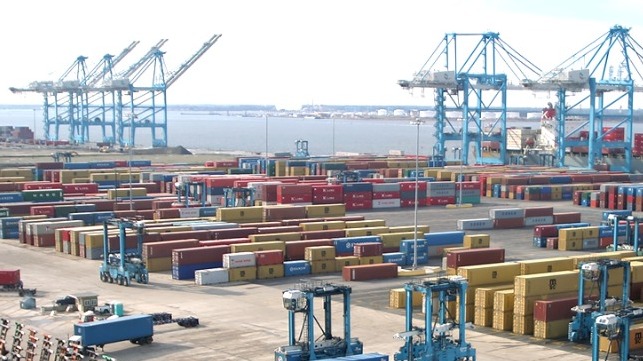Secretary Chao Announces $220 Million in Port Infrastructure Grants

The U.S. Department of Transportation Secretary Elaine L. Chao today announced the award of more than $220 million in grant funding to improve port facilities in 15 states and territories through the Maritime Administration’s (MARAD) Port Infrastructure Development Program.
“This $220 million in federal grants will improve America’s ports," said Secretary Chao. "Nearly half the projects are located in Opportunity Zones, which were established to revitalize economically distressed communities."
The funding is directed at facilities at or near coastal seaports, and it provides support for planning, capital improvements, project management and operations. “These grants will help our nation’s economy and ensure that America’s ports can continue to operate effectively in the competitive global marketplace," said Maritime Administrator Mark H. Buzby in a statement.
“AAPA and our member U.S. ports are extremely appreciative and grateful to MARAD and Congress for ensuring continued investment in our nation’s multimodal port infrastructure through the Port Infrastructure Development Program,” said Christopher J. Connor, president and CEO of the American Association of Port Authorities. “These awards represent a significant step toward investing in one of our country’s most precious and important assets - our seaports.”
Highlights of the grant announcement include $20 million for rail yard improvements at Norfolk International Terminals; $22 million for the reconstruction and rehabilitation of Crown Bay Terminal on the island of St. Thomas; $10 million for repairs on the Port of Coos Bay's 134-mile railroad line; and $10 million for a dock conversion to help the former Avondale Shipyard transition into its new use as a cargo terminal.
In Bellingham, Washington, a $7 million grant will underwrite terminal improvements to increase the port's capacity for barge loading. It will also support the construction of a larger, more robust heavy load area and the removal of rock outcroppings that limit the draft of ships docking at one of the berths.
“This is great news for our working waterfront,” said Port of Bellingham Executive Director Rob Fix. “The grant funding will allow us to modernize our shipping terminal to accommodate a much wider range of vessels and cargoes, and offer a viable shipping alternative to the crowded Canadian ports just north of Whatcom County. Increasing trade and commerce at the Bellingham Shipping Terminal will create working waterfront, family-wage jobs and support state-wide, Covid-19-related economic recovery efforts.”
Other grant highlights include:
Baltimore, Maryland: Mid-Atlantic Multi-Modal Transportation Hub ($10 million)
This grant will add additional waterside access, create a bulk import and export terminal, install a modern gate complex, and upgrade the heavy-duty road network. The project will upgrade rail connectivity and repair all degraded utilities.
Wilmington, North Carolina: Container Gate Innovation & Access ($16 million)
This grant will provide for a new container gate featuring Optical Character Recognition and Weigh-in-Motion Sensors, which will allow drivers to enter and exit the port without stopping for processing. The proposed improvements also allow the Port to streamline container traffic flow throughout the terminal and open up additional yard storage capacity.
Conneaut, Ohio: Port of Conneaut Connector ($20 million)

that matters most
Get the latest maritime news delivered to your inbox daily.
This grant will help connect truck and rail freight to the Port of Conneaut, a Great Lakes deep-water port on the shores of Lake Erie. The project entails construction of a dredge material facility to maintain shipping access; a new roadway from US 20 to the Port of Conneaut; and a new rail spur.
Seattle, Washington: Terminal 5 Uplands Modernization and Rehabilitation Project ($10.7 million)
This grant will support infrastructure improvements including surfacing, paving, and reinforcement of a terminal-wide storm water treatment system. Additionally, the project will focus on upsizing electric refrigerated plug capacity and on-terminal rail infrastructure improvements.
